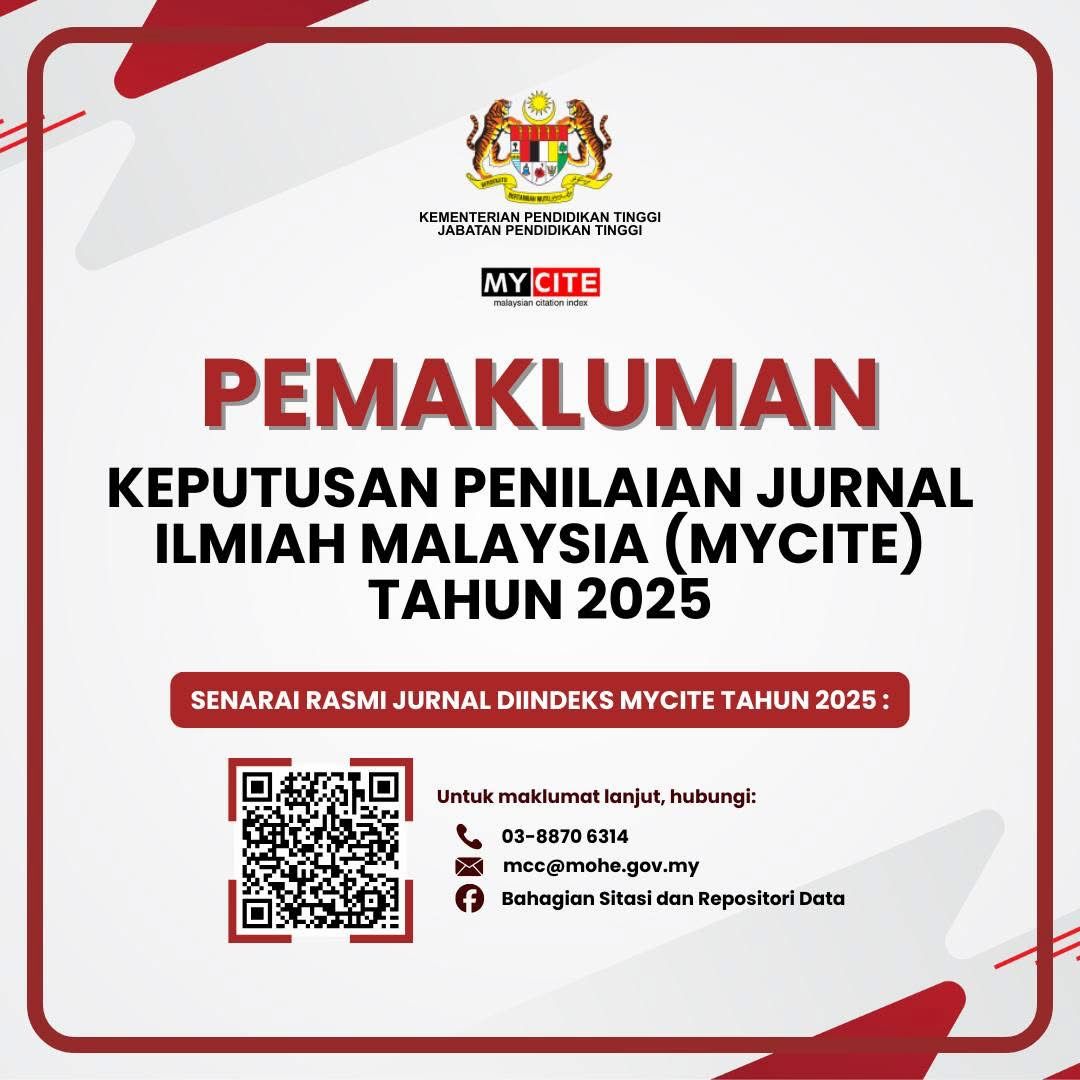Exploring The Role of Typography in Documentary Videos: A Case Study on Mineral Resources
DOI:
https://doi.org/10.24191/idealogy.v10i2.841Keywords:
Typography, Documentary Videos, Mineral Resources, Fonts, Motion EffectsAbstract
This study explores the capabilities of typography to enhance communication and audience engagement in documentary videos, specifically regarding education content on mineral resources. The stimulus comes from the growing contribution of visual communication towards effective presentation of complex environmental information. Although it is widely applied in multimedia, typographic design's contribution to learning and memory of messages delivered via video-based learning has not been exhaustively researched. This research addresses the deficiency of typographic design rules in documentary settings, particularly for scientific and environmental content. Using a qualitative content analysis method, the paper investigates five documentary clips on YouTube that utilize motion and animated typography. Each cut was analysed for typographic aspects such as font, size, colour, alignment, and motion effects with particular focus on how they contribute to the clarity of the message, visual sequence, and understanding by the audience. The findings were recorded systematically in screenshots and coding matrices. The results indicate that thoughtful typographic design, especially through aligned planning and motion effects can significantly enhance viewer understanding and recall. This means typography is not merely a stylistic component but also a functional one in effective educational media. The findings encourage more systematic, context-dependent applications of typography in motion graphics and suggest future research in interdisciplinary visual communication methods.
Keywords: Typography, Documentary Videos, Mineral Resources, Fonts, Motion Effects
References
Amar, J., Droulers, O., & Legohérel, P. (2017). Typography in destination advertising: An exploratory study and research perspectives. Tourism Management, 63, 77–86. https://doi.org/10.1016/j.tourman.2017.06.002
Annals of Tourism Research, 97. https://doi.org/10.1016/j.annals.2022.103490
Burns, J., & Jarratt, D. (2022). Typography and tourism places: The case of the English seaside resort.
Burwell, C. (2017). New(s) Readers: Multimodal Meaning-Making in AJ+ Captioned Video. M/C Journal, 20(3). https://doi.org/10.5204/mcj.1241
Lelis, C., Leitão, S., Mealha, Ó., & Dunning, B. (2022). Typography: the constant vector of dynamic logos. Visual Communication, 21(1), 146–170. https://doi.org/10.1177/1470357220966775.
Luthfiasari, A. (2019). POTENSI KINETIC TYPOGRAPHY SEBAGAI MEDIA INFORMASI. Wimba: Jurnal Komunikasi Visual, 10(2). https://doi.org/10.5614/jkvw.2019.10.2.2
Luthfiasari, A., & Fadillah, C. (2023). Comparative analysis of kinetic typography elements in movie title sequence. Serat Rupa Journal of Design, 7(1), 43–60. https://doi.org/10.28932/srjd.v7i1.5636
Malek, S., & Mokhtari Dehkordi, R. (2020). Ability To Animate Persian Typography In Comparison With English Typography. Gênero & Direito, 9(2). https://doi.org/10.22478/ufpb.2179-7137.2020v9n2.50778
McCarthy, S. (2020). Digital Typography at Stanford. She Ji, 6(4), 546–560. https://doi.org/10.1016/j.sheji.2020.08.006
Misson, J. (2023). Typography. In The Oxford Handbook of the History of the Book in Early Modern England (pp. 310–327). Oxford University Press. https://doi.org/10.5040/9781474293754.0232
Muhammad, Din, S. C., & Ghazali, M. (2024). Content Analysis of Graphic Elements in 2D and 3D
Animated Explainer Videos for 3D Laser Scanning in Construction. Idealogy Journal, 9(2). https://doi.org/10.24191/idealogy.v9i2.561
Nor, Inda, Din, S. C., & Nur. (2024). An Integration of 3D Design in Malaysia Digital Tourism. Idealogy Journal, 9(1). https://doi.org/10.24191/idealogy.v9i1.492
Santoso, C. F. (2023). Perkembangan Penelitian Tipografi: Kajian Bibliometrik. Jurnal Bahasa Rupa, 6(2), 158–167. https://doi.org/10.31598/bahasarupa.v6i2.1307
Sjaerodji, Y. S., & Indrawati, D. (2022). Semiotic Analysis of Typography in Apple
Syed, H., Ghazali, M., Nur, & Din, S. C. (2024). An Inspiration Analysis of Digital Illustration Used in Augmented Reality. Idealogy Journal, 9(1). https://doi.org/10.24191/idealogy.v9i1.497
Teng, M. F. (2022). Incidental L2 vocabulary learning from viewing captioned videos: Effects of learner-related factors. System, 105. https://doi.org/10.1016/j.system.2022.102736
Thiessen, M., Beier, S., & Keage, H. (2020). A Review of the Cognitive Effects of Disfluent Typography on Functional Reading. Design Journal, 23(5), 797–815. https://doi.org/10.1080/14606925.2020.1810434
Varasteh, M., Ali, A., Esteve, S., Jeevanandam, P., Göpfert, F., Irvine, D. M., … McGarry, C. K. (2023). Patient specific evaluation of breathing motion induced interplay effects. Physica Medica, 105. https://doi.org/10.1016/j.ejmp.2022.11.005
Virtual Advertisement. Lire Journal (Journal of Linguistics and Literature), 6(1), 1–18. https://doi.org/10.33019/lire.v6i1.136
Wang, Q. (2024). Cultivating Authenticity: A Framework for Instructional Design in Augmented Reality (AR) Storytelling. The Journal of Applied Instructional Design, 13(4). https://doi.org/10.59668/2033.18645
Yadav, P., Chakrabarti, D., & Bisoyi, D. (2014). Typography as a statement of Design. International Ergonomics Conference HWWE (May), 6. Retrieved from https://www.researchgate.net/profile/Preeti-Yadav- 8/publication/316683307_Typography_as_a_statement_of_Design/links/590c17be0f7e9b7fed8f 7468/Typography-as-a-statement-of-Design.pdf
이윤정. (2012). An Analysis of Expression According to Elements of Motion Graphic. Journal of Korea Design Knowledge, null(22), 139–148. https://doi.org/10.17246/jkdk.2012..22.014
Downloads
Published
Issue
Section
License
Copyright (c) 2025 UiTM Press

This work is licensed under a Creative Commons Attribution-NonCommercial-NoDerivatives 4.0 International License.
UiTM Press (the Publisher) has agreed to publish the undersigned author’s paper in Idealogy Journal. The agreement is contingent upon the fulfilment of a number of requirements listed below.
1. The undersigned author warrants that the paper entitled below is original, that it is not in any way libellous or unlawful in Malaysia, that it does not infringe any copyright or other proprietary right. The undersigned hereby represents and warrants that he/she is the author of the paper, except for material that is clearly identified as to its original source, with permission notices from the copyright owners where required. The undersigned represents that he/she has the power and authority to sign and execute this agreement.
2. The undersigned author warrants that the paper entitled below has not been published elsewhere, and also it will not be submitted anywhere else for publication prior to acceptance/rejection by this Journal.
3. By submitting the paper entitled below, the undersigned author agrees to transfer the rights to publish and distribute the paper in an international e-journal (entitled above) to Publisher.
4. The undersigned author agrees to make a reasonable effort to conform to Publisher's submission guidelines and to liaise with the editor to ensure that the requirements of these guidelines are met to a reasonable degree.
5. The corresponding author signs for and accepts responsibility for releasing this material on behalf of any and all coauthors. This agreement is to be signed by at least one of the authors who has obtained the assent of the co-author(s) where applicable. After submission of this agreement signed by the corresponding author, changes of authorship or in the order of the authors listed will not be accepted.



